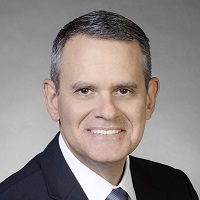ETFs Are Hot, But Are They the Right Investment for You?
The younger cousin to mutual funds, exchange-traded funds (ETFs) offer some convenient advantages, like lower fees and greater tax efficiency.


Exchange-traded funds (ETFs) first came on the investing scene in the early 1990s and have exploded in popularity since the mid-2000s. They’re popular for a variety of reasons but chiefly for their versatility and convenience.
ETFs are designed to track various industries or investment strategies and can contain a variety of investments, including stocks, bonds, cash equivalents or commodities. They’re a popular alternative to mutual funds, despite the similarities between the two investment vehicles.
ETF vs mutual fund: What’s the difference?
At the base level, ETFs and mutual funds act in much the same way. Both are designed to allow an investor to benefit from ownership in multiple securities as part of a single investment. So, instead of owning shares of one company or stock, the investor buys shares of a fund that is made up of a basket of different investments. Owning a diverse set of investments minimizes your risk of being overexposed to a specific stock or bond. Both ETFs and mutual funds are also highly liquid, meaning you can generally buy and sell them easily.

Sign up for Kiplinger’s Free E-Newsletters
Profit and prosper with the best of expert advice on investing, taxes, retirement, personal finance and more - straight to your e-mail.
Profit and prosper with the best of expert advice - straight to your e-mail.
While the first exchange-traded fund launched 30 years ago, traditionally most strategies focused on investing in passive baskets that tracked a broad-based index. Active ETFs were slower to develop. An important ruling from the SEC in 2019 helped revive interest in active ETFs. The SEC's updated regulations allowed for actively managed ETFs to create custom portfolios that had the potential to outperform the market like open-ended mutual funds. Perhaps most importantly, the new rules offered a more straightforward path for ETFs to be approved by regulators, making it simpler to create and launch ETF products.
Some pros of owning ETFs
There are many potential benefits to investing in ETFs. Unlike mutual funds, which are available for trading only at the end of each market day, ETFs allow investors to react to market activity by buying or selling shares in real time. In addition to intraday trading, ETFs are increasingly attractive to investors because they are:
Transparent: Holdings of an ETF are disclosed in real time, which allows investors to make more educated decisions about their potential performance. Many mutual funds only disclose holdings on a monthly or quarterly basis.
Tax efficient: Capital gains-triggering events in an ETF are generally limited to when the investment is liquidated — as opposed to a mutual fund, which passes on the cost of trading the underlying investments in the fund in taxable earnings.
Cost effective: ETFs generally have lower fees relative to mutual funds due to their structure.
As a result, active ETFs have experienced meteoric growth in the U.S. and now account for more than $8 trillion in assets under management (AUM). Since active ETFs first launched, they’ve been growing rapidly in popularity — both from a fund launch and fund flows perspective. Since 2021, over 60% of ETF launches have been active. Active ETF flows continue to meaningfully outpace overall ETF flows on a percentage-of-AUM basis.
Some potential cons that come with ETFs
Despite their advantages, there are also considerations when exploring ETF investing. While ETFs offer the flexibility to trade intraday, they can be subject to disadvantageous spreads — the difference in the price to buy and sell a share of the fund. That’s different from a mutual fund, which will always trade according to the net asset value of the shares being traded.
Additionally, some ETFs can be difficult to trade, depending on the underlying investments in the fund and any existing market activity.
Ultimately, investing in an ETF doesn’t mean you need to leave mutual funds behind. You can use both as effective alternatives to direct investing in individual stocks or bonds, and both can have a place in a successful portfolio.
Whether investing in mutual funds or ETFs, often the most favorable outcomes result from combining active and passive investment strategies in your portfolios. That’s because active strategies have tended to benefit investors more in certain investing climates, and passive strategies have tended to outperform in others. A financial adviser can help determine a proper investment allocation and selection for your goals.
Price for performance
There can be no debating that actively managed ETFs are a growing force in the investment space — particularly in the post-pandemic time period. As stock market growth slowed during the pandemic, many investors chose to shift to the versatile intraday trading style of an ETF. Additionally, the opportunity to have an investment manager prepared to react to market volatility and inflation stresses of the last few years has contributed to the spike in ownership of active ETFs.
Whether you choose an active or passively managed ETF, or even whether to invest in an ETF at all, will depend on your overall investment goals:
Passive ETFs will invest according to the index or commodity they are designed to track, making for more predictable returns.
Active ETFs will likely provide a better opportunity to outperform the market as the fund manager makes adjustments based on market activity. But you’ll have to pay for that potential in the form of higher management fees.
ETFs are growing in popularity and offer convenience and the potential to outperform the market. If an ETF fits your individual investment strategy, having a conversation with your financial adviser can help determine whether your risk tolerance, appetite for fees and performance goals can be best achieved through a passive or actively managed fund.
Related Content
Get Kiplinger Today newsletter — free
Profit and prosper with the best of Kiplinger's advice on investing, taxes, retirement, personal finance and much more. Delivered daily. Enter your email in the box and click Sign Me Up.

Rich Guerrini is the President and Chief Executive Officer of PNC Investments. In his role, he is responsible for all sales, operations, risk and compliance activities for the retail investments organization. Prior to his current responsibilities, Guerrini was Executive Vice President and Managing Director of Alternative Investments for PNC Investments and was responsible for development and rollout of the PNC Investment Center and PNC’s web-based investment offering.
-
 Before You Invest Like a Politician, Consider This Dilemma
Before You Invest Like a Politician, Consider This DilemmaAs apps that track congressional stock trading become more popular, investors need to take into consideration some caveats.
By Ryan K. Snover, Investment Adviser Representative
-
 How to Put Together Your Personal Net Worth Statement
How to Put Together Your Personal Net Worth StatementNow that tax season is over for most of us, it's the perfect time to organize your assets and liabilities to assess your financial wellness.
By Denise McClain, JD, CPA
-
 Before You Invest Like a Politician, Consider This Dilemma
Before You Invest Like a Politician, Consider This DilemmaAs apps that track congressional stock trading become more popular, investors need to take into consideration some caveats.
By Ryan K. Snover, Investment Adviser Representative
-
 How to Put Together Your Personal Net Worth Statement
How to Put Together Your Personal Net Worth StatementNow that tax season is over for most of us, it's the perfect time to organize your assets and liabilities to assess your financial wellness.
By Denise McClain, JD, CPA
-
 Bouncing Back: New Tunes for Millennials Trying to Make It
Bouncing Back: New Tunes for Millennials Trying to Make ItAdele's mournful melodies kick off this generation's financial playlist, but with the right plan, Millennials can finish strong.
By Alvina Lo
-
 Early-Stage Startup Deals: How Do Convertible Notes Work?
Early-Stage Startup Deals: How Do Convertible Notes Work?Some angel investors support early startups by providing a loan in exchange for a convertible note, which includes annual interest and a maturity date.
By Murat Abdrakhmanov
-
 SRI Redefined: Going Beyond Socially Responsible Investing
SRI Redefined: Going Beyond Socially Responsible InvestingNow that climate change has progressed to a changed climate, sustainable investing needs to evolve to address new demands of resilience and innovation.
By Peter Krull, CSRIC®
-
 Here's When a Lack of Credit Card Debt Can Cause You Problems
Here's When a Lack of Credit Card Debt Can Cause You ProblemsUsually, getting a new credit card can be difficult if you have too much card debt, but this bank customer ran into an issue because he had no debt at all.
By H. Dennis Beaver, Esq.
-
 Going to College? How to Navigate the Financial Planning
Going to College? How to Navigate the Financial PlanningCollege decisions this year seem even more complex than usual, including determining whether a school is a 'financial fit.' Here's how to find your way.
By Chris Ebeling
-
 Financial Steps After a Loved One's Alzheimer's Diagnosis
Financial Steps After a Loved One's Alzheimer's DiagnosisIt's important to move fast on legal safeguards, estate planning and more while your loved one still has the capacity to make decisions.
By Thomas C. West, CLU®, ChFC®, AIF®